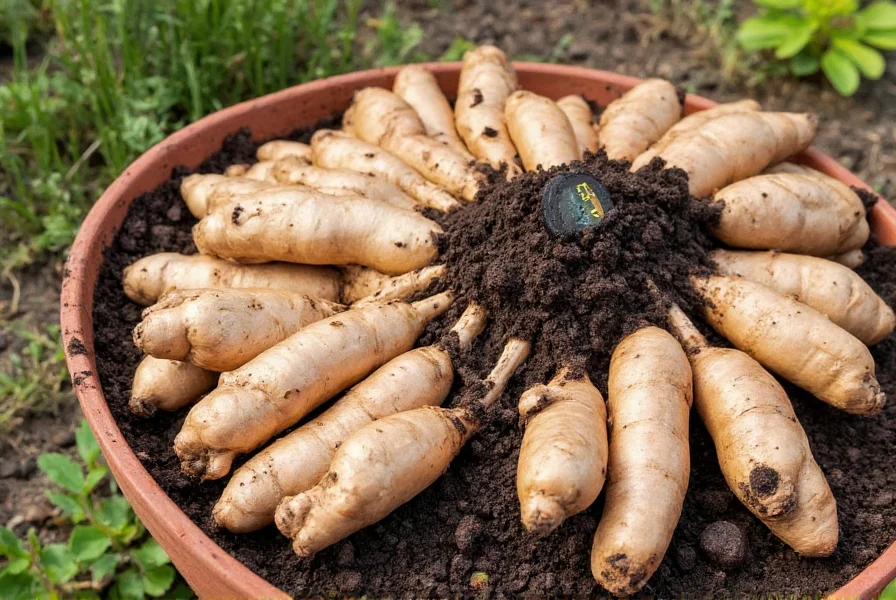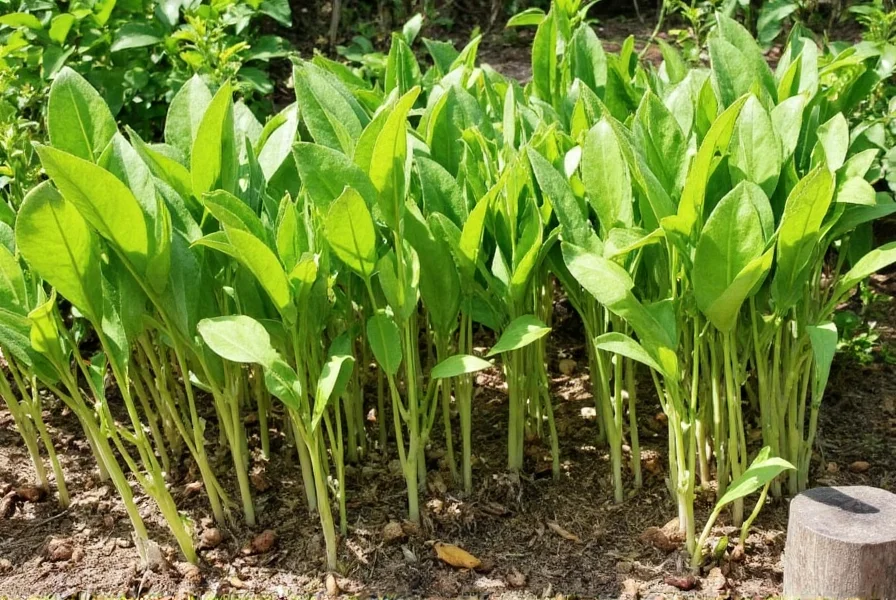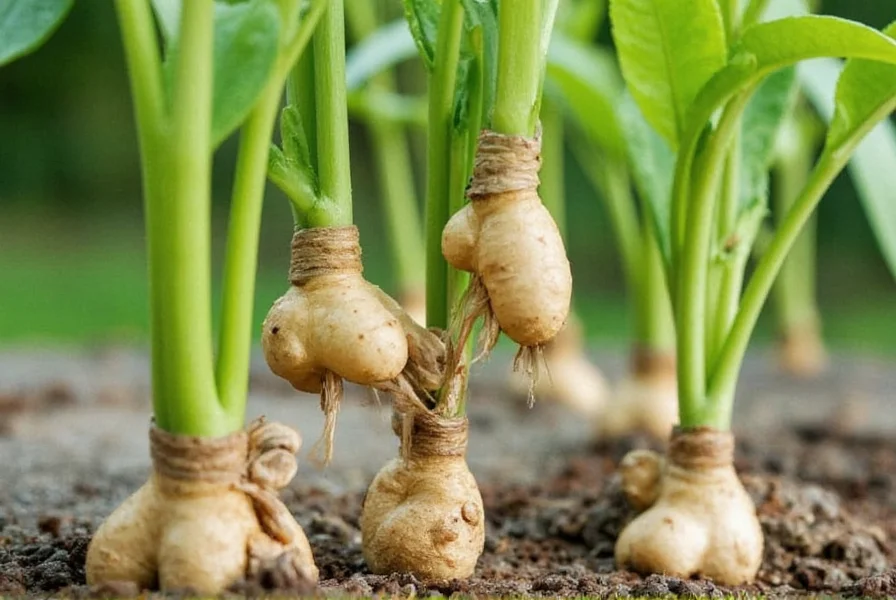Understanding the precise timing for ginger planting separates successful harvests from disappointing results. This tropical perennial requires specific temperature and moisture conditions to thrive, making seasonal timing crucial for gardeners worldwide. Whether you're cultivating in USDA zones 7-10 or tropical regions, aligning your planting schedule with ginger's natural growth cycle dramatically increases your chances of a bountiful harvest.
Understanding Ginger's Natural Growth Cycle
Ginger (Zingiber officinale) originates from Southeast Asia's tropical rainforests, where it grows as an understory plant with distinct seasonal patterns. Unlike many crops, ginger follows a specific growth timeline:
| Seasonal Phase | Duration | Critical Conditions |
|---|---|---|
| Dormant Period | Winter (3-4 months) | Temperatures below 50°F (10°C) |
| Sprouting Phase | 2-4 weeks after planting | Soil temperature 70-85°F (21-29°C) |
| Active Growth | 6-8 months | Consistent moisture, partial shade |
| Maturation/Harvest | 8-10 months after planting | Yellowing foliage signals readiness |
This biological rhythm explains why planting too early or late significantly impacts yield. Ginger rhizomes remain dormant in cold soil and risk rotting in overly wet conditions, while planting during peak heat stresses young shoots.
Regional Planting Guidelines
Your geographic location determines the ideal when to plant ginger in your area. Consider these regional recommendations:
Tropical Climates (USDA Zones 10-12)
In consistently warm regions with minimal frost risk, plant ginger at the beginning of the rainy season. This typically means:
- March-April in Southeast Asia
- September-October in Southern Hemisphere tropics
- Any time with consistent 75-85°F (24-29°C) temperatures
Subtropical Climates (USDA Zones 8-9)
These regions experience mild winters with occasional frosts. Plant ginger:
- 4-6 weeks after the last frost date
- When soil temperature consistently exceeds 65°F (18°C)
- Early to mid-spring (March-May in Northern Hemisphere)
Temperate Climates (USDA Zones 5-7)
Gardeners in cooler regions should treat ginger as a seasonal crop:
- Start indoors 6-8 weeks before last frost
- Transplant outdoors when nighttime temperatures stay above 55°F (13°C)
- Use containers for easier temperature control
- Provide partial shade during summer heat waves

Step-by-Step Planting Instructions
Follow these steps for successful ginger cultivation regardless of your climate zone:
- Select quality rhizomes: Choose plump, firm pieces with multiple growth buds ("eyes")
- Pre-sprout indoors (optional but recommended): Place rhizomes in moist paper towels inside a warm (75-80°F) location for 2-3 weeks
- Prepare soil: Amend with compost to achieve loose, well-draining soil with pH 5.5-6.5
- Planting depth: Position rhizomes 2-4 inches deep with growth buds facing upward
- Spacing: Allow 8-12 inches between plants in rows 18-24 inches apart
- Initial watering: Moisten soil thoroughly but avoid saturation
Common Planting Mistakes to Avoid
Many gardeners encounter problems due to timing errors. Watch for these issues:
- Planting too early: Cold, wet soil causes rhizome rot before sprouting
- Planting too late: Shortened growing season reduces harvest size
- Incorrect soil temperature: Below 65°F delays sprouting; above 90°F stresses plants
- Overwatering at planting: Saturated soil suffocates developing roots
- Insufficient light adjustment: Ginger needs partial shade in hot climates but more sun in cooler areas
Post-Planting Care Timeline
After planting your ginger rhizomes, follow this care schedule for optimal growth:
| Time After Planting | Care Requirements | Expected Development |
|---|---|---|
| 0-4 weeks | Moderate moisture, 70-85°F soil | Rhizome sprouting, root development |
| 1-3 months | Consistent moisture, partial shade | Leafy shoots emerge, rapid vegetative growth |
| 4-6 months | Mulch to retain moisture, monthly feeding | Rhizomes begin forming underground |
| 8-10 months | Reduce watering, watch for yellowing leaves | Rhizomes mature, ready for harvest |

Extending Your Ginger Growing Season
Gardeners in cooler climates can maximize their harvest with these techniques:
- Container gardening: Grow ginger in pots that can be moved indoors when temperatures drop below 50°F
- Season extension: Use black plastic mulch to warm soil 2-3 weeks earlier in spring
- Indoor winter growing: After harvest, keep a few rhizomes sprouting indoors under grow lights
- Cold frame protection: Extend the growing season by 4-6 weeks in fall
Remember that ginger requires 8-10 months of warm growing conditions to produce substantial rhizomes. In regions with short summers, focus on maximizing your optimal ginger planting window rather than trying to grow year-round.
Harvest Timing Considerations
While the question focuses on planting, understanding harvest timing completes the cycle. Ginger reaches maturity 8-10 months after planting when:
- Foliage turns yellow and begins dying back
- Rhizomes develop a smooth, firm texture
- Outer skin becomes harder and more fibrous
For "new" or young ginger with thinner skin and milder flavor, harvest at 6-7 months. For mature ginger with stronger flavor and better storage qualities, wait the full 8-10 months. In temperate climates, harvest before first frost to prevent rhizome damage.
Frequently Asked Questions
Can I plant ginger year-round in tropical climates?
Yes, in tropical climates with consistent temperatures above 70°F (21°C), you can plant ginger year-round. However, the optimal time is at the beginning of the rainy season when natural moisture supports sprouting without risk of rhizome rot from excessive water.
What happens if I plant ginger too early in spring?
Planting ginger too early when soil temperatures are below 65°F (18°C) risks rhizome rot before sprouting. Cold, wet soil creates ideal conditions for fungal diseases. Wait until soil consistently reaches 70°F at planting depth, typically 2-4 weeks after your last frost date.
How do I determine my exact planting date for ginger?
Calculate your ginger planting date by finding your last frost date, then adding 2-4 weeks. Verify with a soil thermometer—plant when soil at 2-inch depth consistently reads 70-85°F (21-29°C) for three consecutive days. In warmer zones, plant when daytime temperatures consistently exceed 75°F.
Can I grow ginger indoors year-round?
Yes, ginger grows well indoors year-round with proper conditions. Maintain temperatures between 70-85°F (21-29°C), provide bright indirect light or grow lights for 6-8 hours daily, and keep soil consistently moist but not soggy. Start with pre-sprouted rhizomes for best results.
How long after planting ginger will I see sprouts?
Ginger typically sprouts 2-4 weeks after planting when soil temperatures are optimal (70-85°F). Pre-sprouted rhizomes may show growth in 7-10 days. Cooler temperatures significantly delay sprouting—sometimes up to 8 weeks in marginal conditions.











 浙公网安备
33010002000092号
浙公网安备
33010002000092号 浙B2-20120091-4
浙B2-20120091-4